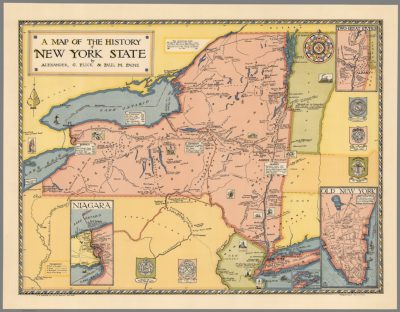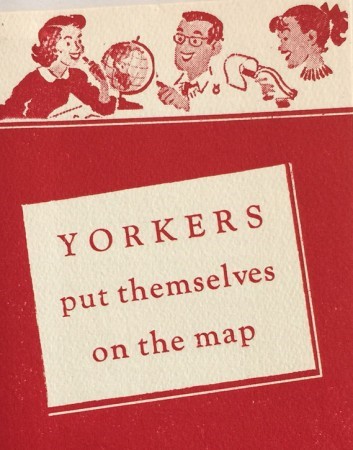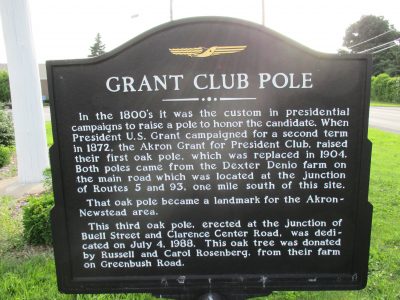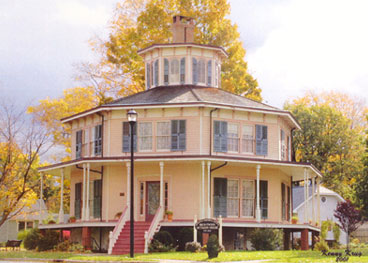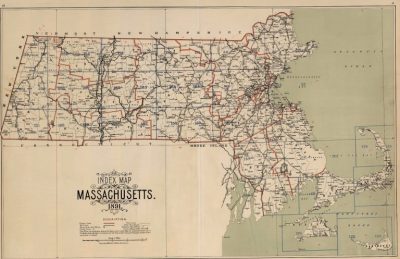
On June 4, 2018, I attended the annual Massachusetts History Conference. The conference was held at Holy Cross. The University of Massachusetts was a supporter through its Amherst Program in Public History, Boston Public History and Archives Tracks and the Joseph P. Healey Library. Mass Humanities, Massachusetts Historical Society, Massachusetts State Historical Records Advisory Board, Freedom’s Way National Heritage Area, and a vendor also were supporters.
I mention these supporters to highlight the diversity or support required to promote state and local history. The exact counterparts may vary in each state but the overall message is clear. Depending on the state, one needs to reach out to the academic institutions, NPS and state historic sites, non-profit historical organizations. I note by chance there were three teachers from the same school at my table at breakfast and they may have been the only ones in attendance. As you might expect they had a lot to say in the session about the proposed k-12 history curriculum framework changes. I recognize the need for conferences devoted to a single aspect of the history, but at some point there needs to be an entity surveying all the constituencies of the history community.
I did not attend the conference because of a great love for Massachusetts since everyone knows New York is the center of the universe! I attended because for the second year in row, the event was hosted by the Massachusetts History Alliance. This new and still-forming group drew my attention as it had last year because of its mission: to advocate on behalf of state and local history.
Let me begin with an historical overview. For my report on the Massachusetts History Conference on June 12, 2017, see The New York History Alliance https://ihare.org/2017/07/28/the-new-york-history-alliance/ In that blog, I noted the creation of the Massachusetts History Alliance on November 16, 2016, at a meeting held at the American Antiquarian Society in Worcester.
You may wonder why I entitled a blog about the Massachusetts History Alliance The New York History Alliance. The choice of that title was due to complete collapse of any organization in New York State even pretending to advocate on behalf of the state history community. For some more history on this disastrous situation in the state, I refer to you to a series of blogs on the developments in 2017.
History Professors Protest for Local and State History
NYSHA Responds to Advocacy for Local and State History Post
The NYSHA Saga Continues: Gone but Not Forgotten
The Battle over New York State and Local History Gets Ugly
Create the New York Association for State and Local History (NYASLH)
Since then nothing has happened. As of the writing of this blog there is no advocacy for state and local history by a statewide organization in New York and no prospects for one. The major area of exception is in historic preservation where there are three organizations: one based in Albany, one in western New York, and one in New York City.
With this background in mind, let’s turn to the actions of the Massachusetts History Alliance. In the conference packet, the Mass History Alliance, as it is referred to, declared the following:
Despite rumors that history is dead, the public history field is robust. Increasingly, history is part of the conversation in towns and platforms across the state. Rich visual and other media materials engage millions of people in historical narrative and analysis. That doesn’t mean that enough individuals are engaged in history. To the contrary, the current state of the public conversation shows that there’s a lot of room for our work. A great motivator!
The second paragraph addresses one immediate concern:
The state of public funding for things historical is still pitiful, and we need to do a lot of work there also. This year the Massachusetts History Alliance started its advocacy work with a focus on the health of the Community Preservation Fund [CPA], which is a great source of funding for many of us. There’s a session to learn first-hand about the CPA and how it works for historical organizations in a few different towns, if you want to find out more.
The two takeaways from this paragraph are:
1. Start advocating by building on an existing program with which legislators already are familiar
2. Provide a training session(s) to the history community on how to use the existing program.
Certainly these are reasonable goals and actions.
Now let’s turn to the actual sessions at the conference directly related to these objectives.
The first one, right after the morning plenary address was an Open Meeting and Information Session of the Mass History Alliance.
Join the board and committees of the Mass History Alliance in an open conversation about current topics. Here’s your chance to ask questions and put in your two cents. Topics: advocacy, the new website, the upcoming board election, next year’s conference, current issues. All are welcome.
I attended this session to learn about what is going on. The first item was that all the people who had volunteered so far to make the organization work had terms expiring July 16, 2018. As a result new board members were needed.
One issue of course was funding, funding not for the organization but for the annual history conference itself. Whether current funders would continue to provide funding for the 2019 conference and if so in what amounts was an area of concern.
A second issue was to identify the “asks.” In other words, to advocate for what? To ask legislators and government officials for what? The Alliance needs to identify what legislative bills are in its own interest, to create its own list of asks, and to identify supporters in the legislature.
While this general discussion was useful, it left open the specifics of how and by whom this is to be accomplished. As noted in my blogs on the dismal state of state history in New York, there are advocacy days in the state capital for various sectors of the state but none for history. Advocacy Day means meeting with targeted legislators with specific asks and not to wax poetic about the importance of history to the social fabric or as an academic discipline. My sense is that the Mass History Alliance still has its work cut out for it.
A second related session was about the aforementioned CPA.
A CLASS ACT: A SHOWCASE OF COMMUNITY PRESERVATION ACT-FUNDED PROJECTS
Community preservation includes history. The session will feature a first-hand discussion of a variety of historical preservation, records inventory and preservation, and historical assessment projects funded though the Community Preservation Act across the Commonwealth. Learn more about the Act and how it works, and how it plays out in real life. Hosted by the Mass History Alliance Advocacy Committee.
Communities have to opt into participating in the program. About half of the Massachusetts communities have done so. The program covers affordable housing, open space, and recreation projects so it is not a solely history funding source. During this sessions, people from two historical societies presented on their successful funding requests. Obviously the detail of such history funding varies from state to state. Clearly this type of funding is needed in each state as is the familiarizing of the history community with it. The larger issue for the history alliance is the amount of funding.
The third related session was devoted to the alphabet soup of history-related funding organizations in the state. The acronyms are unique to Massachusetts but as with CPA, it is useful to try to determine what if any are counterparts in each state and the levels of funding. The session was:
FEDERAL, STATE, AND LOCAL GOVERNMENT FUNDING FOR SMALL HISTORICAL ORGANIZATIONS
In a roundtable, representatives of the Massachusetts Cultural Council (MCC), the Massachusetts Historical Commission (MHC), the State Historical Records Advisory Board (SHRAB), and Mass Humanities (MH) will briefly present grant programs that are particularly interesting for historical organizations, followed by a short discussion. Come and get some brochures and get your questions answered. Links to their grant programs can be found on the conference site.
As an outsider unfamiliar with these organizations, some of the discussion was difficult to follow when it revolved around well-known local acronyms. Two observations are, yes, the amounts granted to applicants were small and the aggregate available to each state-wide granting organization also seemed small. It also made me wonder about
1. funding for capital expenditures (MHC has a Preservation Projects Fund where development project funding grants up to $100,000 are available with a total statewide budget of $780,000)
2. funding for collaborative efforts either within one of the regions in the state or thematically throughout the state
3. funding programs for the non-small historical organizations.
Again as an outsider with knowing the lay of land, I may be overlooking what everybody else at the conference knows.
In the President’s report for the July annual meeting issued subsequent to the conference and available on the Mass History Alliance website as a PDF, Pleun Bouricius wrote:
The Mass History Alliance reports a first year in which we became an “official” organization and made some gains. We ran a small advocacy campaign for the
Community Preservation Act, pulled off a fantastic Mass History Conference, and grew to almost double in size. We did however, also suffer from low participation in committee work. Most of the work that was done, was done by very few people. If we are to survive and thrive the coming year and beyond, we need to step up our game considerably in strategic development, communications, regional work, advocacy, fundraising, and the development of our website. All of this needs to be done by a network of volunteers. The more active participants we have, the more readily we can make it happen. I am confident that this year, after our first election, we will solidify ourselves into a functioning organization and start making a difference.
Volunteers are important but there is something to be said for having a full-time executive director and a lobbyist on retainer.
One item in particular stands out in the presidential report:
8) (This directly from the advocacy committee which is active and has gone through a process of deciding what advocacy looks like in the first instance) A local History Advocacy Day will have been held (likely in February, 2018) and plans are under way for further activities and a day for 2019.
This point was elaborated on in the annual report.
8) The Advocacy Committee was active during the first part of the year, and held meetings to determine strategy and plans. The committee determined that advocacy includes collaborative and networked advocacy to the public, towns, regions, and the legislature. i.e. the MHA sets up opportunities and campaigns for people and organizations to participate in. Given limited resources and being new to the game, the committee decided the best strategy in the short term would be to a) meet legislators and b) advocate and encourage advocacy in the field for state legislation already proposed or in existence.
In the first instance, that was support for the Community Preservation Act. Members of the committee spoke with the Community Preservation Coalition and devised and implemented an advocacy plan that resulted in postcards being sent by the Pioneer Valley History Network members. Members of the committee spoke with Senator Eric Lesser about the act and also about funding for the Preservation Grants for Veterans Collections, Monuments and Memorials, which has run through the State Historical Records Advisory Board. Members of the committee also spoke at length with members of the staff at the Massachusetts cultural Council, learning more about the MCC’s grants that might be open to small organizations, and advocating for readily accessible funds to keep the doors open for tiny archives and museums.
For me this is the heart and soul of the alliance. Yes there are issues about bylaws, 501(c)3, membership, and funding but for what purpose? To fulfill the actions indicated in item #8 starting by advocating on existing legislation.
In the months to come, it will be vitally important to track the successes and failure in this advocacy effort. In the meantime, it would be useful to know if any states have successful state-wide history advocacy groups.


